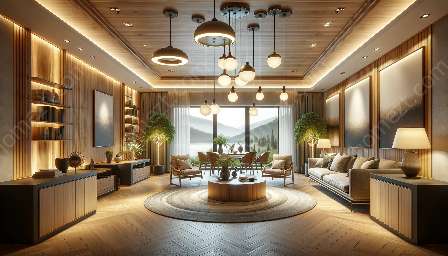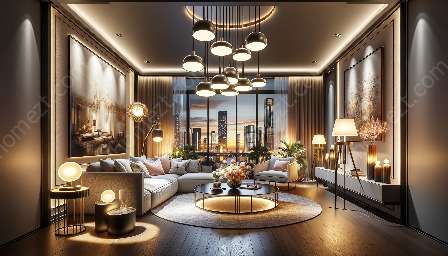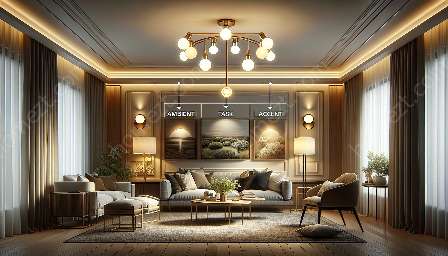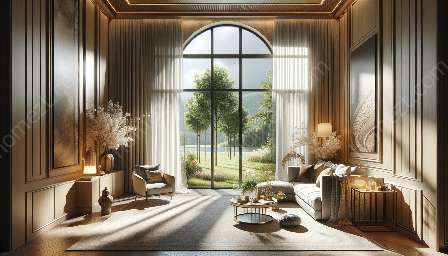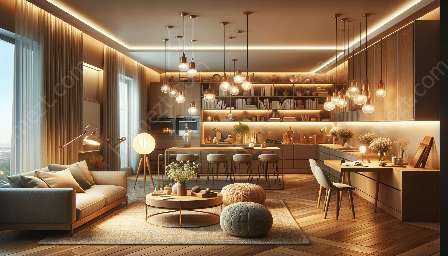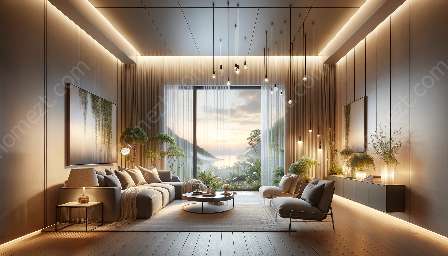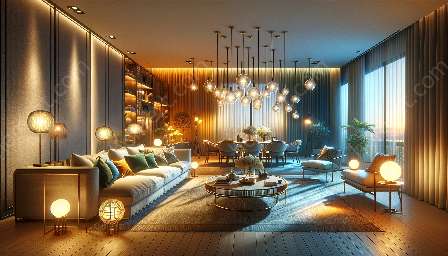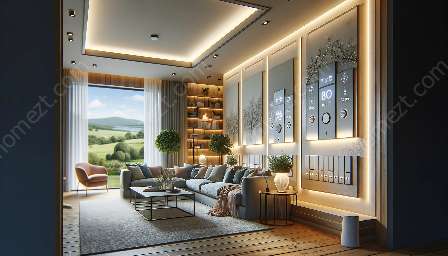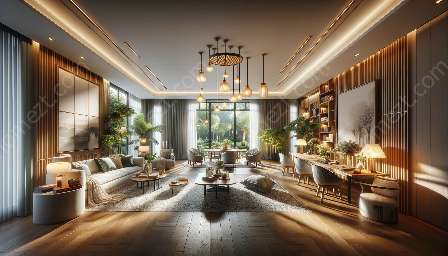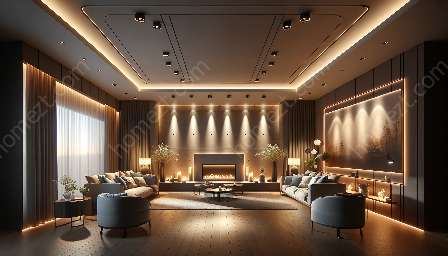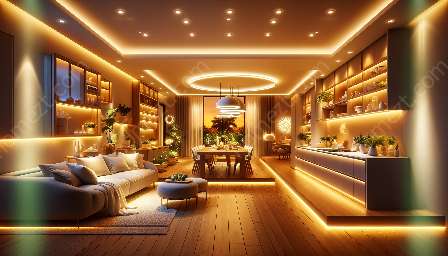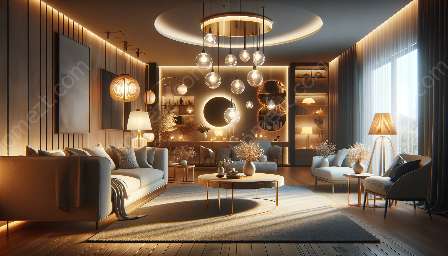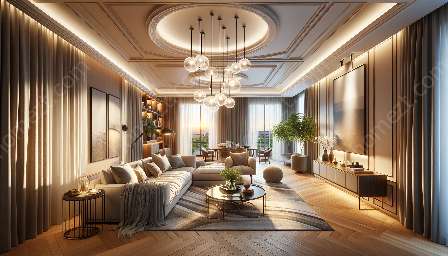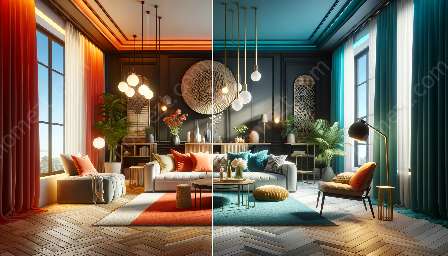When it comes to lighting, each room in your home has its own unique requirements. The right lighting design and home furnishings can transform a space, making it both visually appealing and functional. In this comprehensive guide, we'll explore the art of lighting for different rooms, from the living room to the kitchen, and provide tips on how to achieve the perfect ambiance for each area of your home. Let's delve into the world of lighting design and home furnishings to create a warm, inviting, and aesthetically pleasing environment.
Living Room Lighting
The living room serves as the heart of the home, where families and friends gather to relax and socialize. Therefore, the lighting in this space should be versatile and inviting. To create a warm and cozy atmosphere, a combination of ambient, task, and accent lighting is essential.
Ambient Lighting: Start with ambient lighting, such as overhead fixtures or chandeliers, to provide overall illumination. This sets the mood for the room and ensures that the space is well-lit.
Task Lighting: Incorporate task lighting, such as table lamps or floor lamps, to illuminate specific areas where activities like reading or board games take place. This type of lighting adds depth and functionality to the room.
Accent Lighting: Use accent lighting, such as wall sconces or recessed lights, to highlight artwork, architectural features, or decorative elements within the living room. This layer of lighting adds visual interest and depth to the space.
Bedroom Lighting
The bedroom is a place of relaxation and rejuvenation. It's important to create a calming ambiance with the right lighting design and home furnishings. Soft and soothing lighting is key to setting the mood for rest and relaxation.
Bedside Lamps: Bedside lamps are essential for providing a warm and intimate glow for reading or winding down before sleep. Choose lamps with soft, diffused shades to create a cozy atmosphere.
Ceiling Fixtures: Consider using a dimmable ceiling fixture with a warm color temperature to provide soft, overall lighting. Dimmer switches offer control over the brightness, allowing you to customize the ambiance according to your needs.
Closet Lighting: Install task lighting in the closet area to ensure adequate visibility when selecting outfits. LED strip lighting or puck lights can be used to illuminate the clothing and storage areas effectively.
Kitchen Lighting
The kitchen is a multifunctional space that requires a balance of task lighting and ambient lighting to facilitate cooking, dining, and socializing. An effective lighting design in the kitchen enhances functionality, safety, and aesthetics.
Under-Cabinet Lighting: Install under-cabinet lighting to illuminate work surfaces and provide task lighting for food preparation. LED strips or puck lights are popular choices for under-cabinet lighting, as they offer focused illumination without creating shadows.
Overhead Lighting: Pendant lights or track lighting can be used to provide ambient lighting for the kitchen. They should be positioned to evenly illuminate the entire space and complement the overall design of the room.
Island Lighting: If your kitchen features an island, consider installing decorative pendant lights or a linear suspension fixture above it. This not only adds visual interest but also provides additional task lighting for the island area.
Bathroom Lighting
The bathroom is a space where bright, clear lighting is essential for grooming and getting ready. However, it's also important to create a relaxing atmosphere for unwinding after a long day. A combination of ambient, task, and accent lighting can help achieve this balance.
Vanity Lighting: Install vanity lights or sconces on either side of the mirror to ensure even illumination for grooming tasks. An overhead fixture can also provide ambient lighting, while a dimmer switch allows you to adjust the brightness for a spa-like experience.
Shower Lighting: If your shower or bathtub is enclosed, consider incorporating waterproof LED fixtures to create a soothing atmosphere. These lights can be controlled separately from the main lighting, allowing you to create a relaxing ambiance during baths or showers.
Accent Lighting: Use accent lighting, such as LEDs placed behind a freestanding tub or under a vanity toe kick, to create a sense of luxury and relaxation. This subtle lighting adds a touch of elegance to the space.
Dining Room Lighting
The dining room is a space for gatherings and entertaining, so the lighting should be both inviting and functional. An aesthetically pleasing lighting design can enhance the dining experience and create a welcoming atmosphere.
Chandelier or Pendant Lights: A central chandelier or pendant lights above the dining table can serve as a focal point and provide ambient lighting. Opt for a fixture that complements the scale and style of the room.
Buffet or Sideboard Lighting: Incorporate accent lighting, such as picture lights or LED strips, to showcase artwork or decorative items on a buffet or sideboard. This adds visual interest and depth to the room, creating a well-rounded ambiance.
Dimmer Controls: Install dimmer switches for the dining room lighting to adjust the brightness level according to the occasion. This allows you to create an intimate atmosphere for formal dinners or increase the brightness for casual gatherings.
Home Office Lighting
The home office requires task-oriented lighting to support work productivity, as well as ambient lighting to create a comfortable and focused environment. The right lighting design can enhance concentration and reduce eye strain.
Task Lighting: A desk lamp with an adjustable arm and directional light is essential for providing focused illumination on the work surface. LED desk lamps are energy-efficient and offer customizable brightness levels to suit individual needs.
Overhead Lighting: Consider installing a ceiling fixture or track lighting to provide ambient lighting throughout the home office. A combination of recessed lights and pendant lights can evenly illuminate the space and reduce harsh shadows.
Natural Light: Whenever possible, maximize natural light by positioning the home office workspace near windows. This can help reduce the reliance on artificial lighting during the day and create a more inviting atmosphere.
Outdoor Lighting
The outdoor areas of your home, such as the patio, deck, and garden, also benefit from thoughtful lighting design and home furnishings. Outdoor lighting serves both practical and aesthetic purposes, illuminating pathways, enhancing security, and extending outdoor living spaces into the evening.
Pathway Lighting: Install low-voltage LED path lights along walkways and garden paths to ensure safe passage and add a touch of charm to the landscape. Solar-powered, wireless options are also available for easy installation.
Deck Lighting: Consider incorporating deck or patio lighting to create an inviting outdoor living area for relaxation and entertaining. String lights, lanterns, or wall sconces can add warmth and ambiance to the space.
Security Lighting: Motion-activated floodlights or wall-mounted fixtures can enhance the security of your home by illuminating dark areas and deterring intruders. Choose fixtures with adjustable settings to customize the coverage area and sensitivity.
Conclusion
The right lighting design and home furnishings play a crucial role in creating a comfortable, stylish, and functional environment for every room in your home. By understanding the specific lighting needs of each space and incorporating the appropriate fixtures and techniques, you can transform your living spaces into inviting and versatile areas. Whether it's the cozy glow of a living room, the tranquil ambiance of a bedroom, or the functional lighting of a kitchen, the art of lighting for different rooms can truly enhance the aesthetic appeal and livability of your home.

